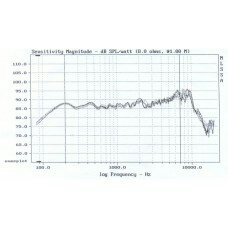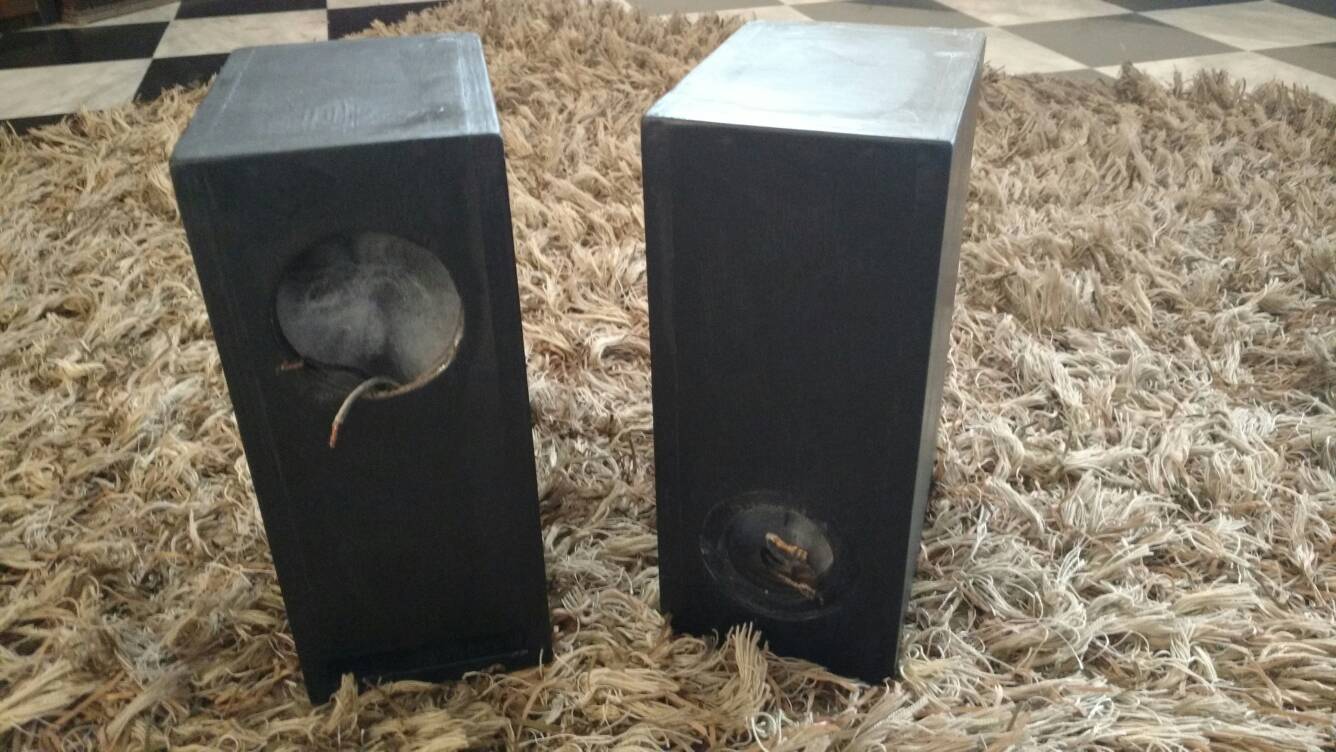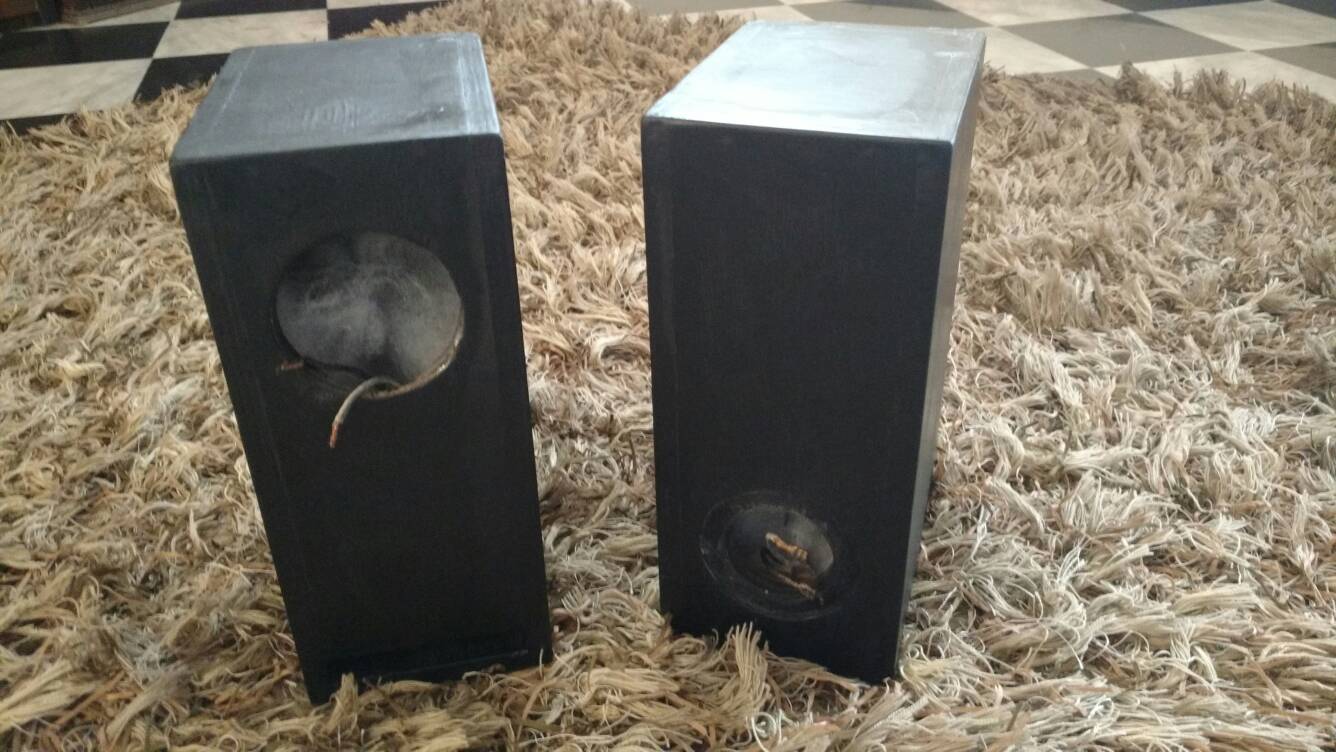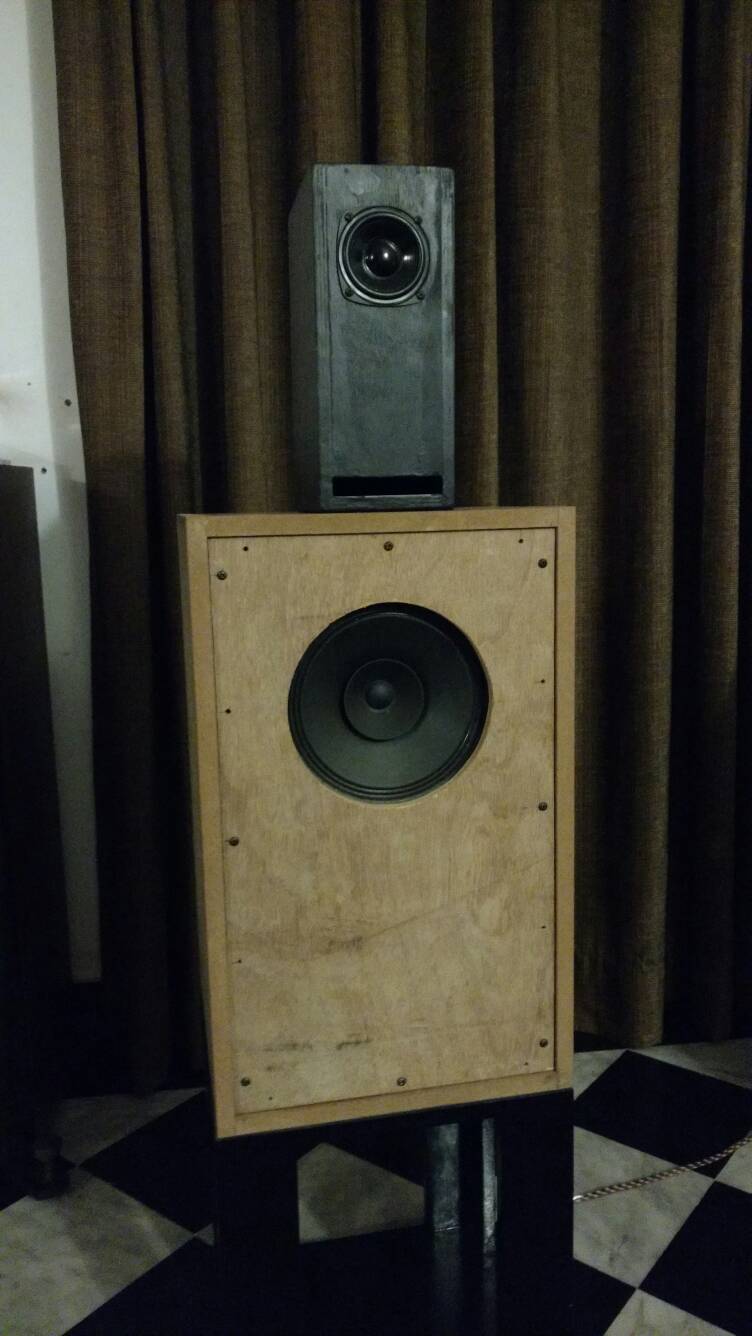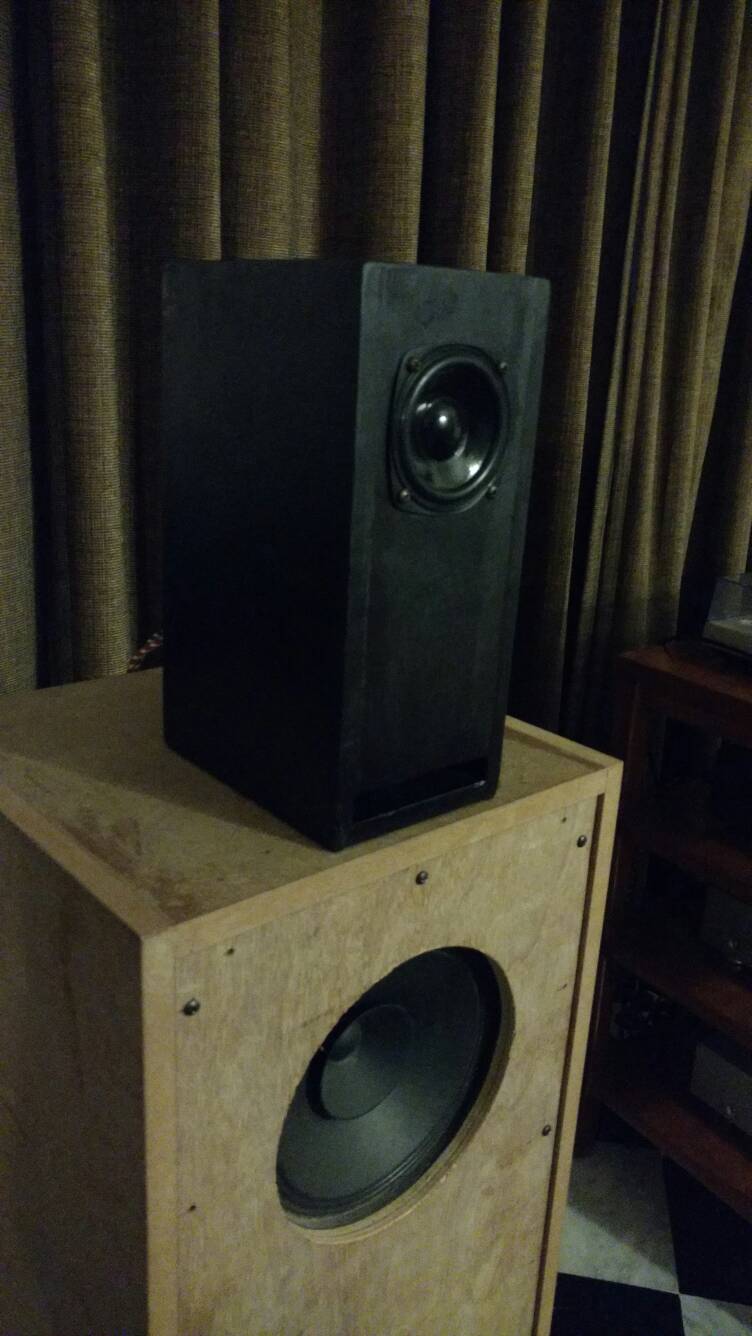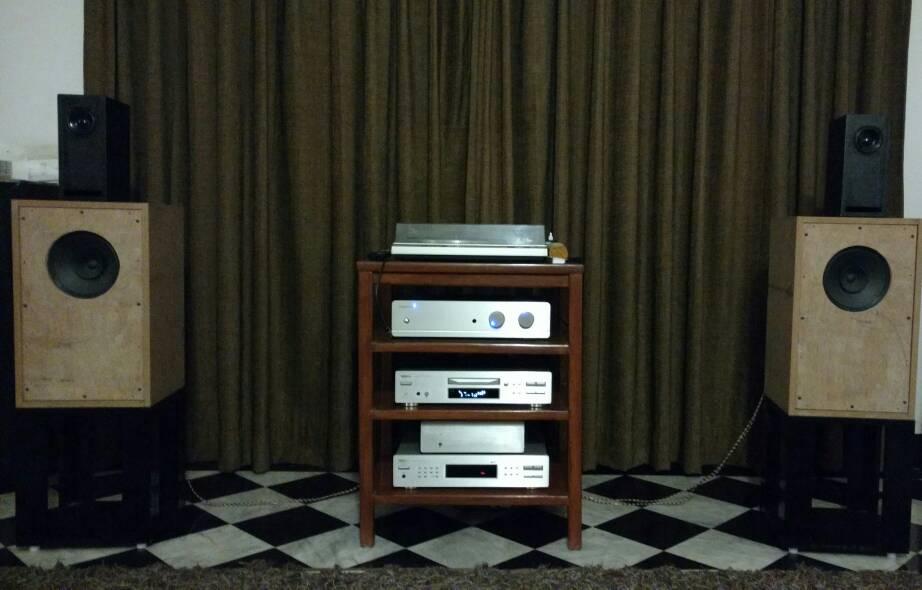aashish351
Well-Known Member
Hi,
Building a simple mini speaker using a 3" single full range driver for desktop use. The driver is Peerless India S07NI (Peerless Fabrikkerne (I) Ltd - 3" Full Range - S07NE)
Since I don't have any T/S measuring tools, I have used those listed on the link above. Listed below as well:
Fs: 100.87 Hz
Qts: 0.51
Vas: 1.27 Ltr
Sd: 31.17 sq. cm
Freq. Resp.: 100-10000 Hz
Impedance: 4 ohm
SPL: 88.5 dB
Calculated volume of the bass reflex box is 2.8 litres and port tuning is 77 Hz. I have used 15mm ply since I had that lying around. The external box dimensions are 5" (width), 11" (Height), 7" (Depth). Slot port is 0.50" wide and 6" deep. Box is stuffed up to 40% volume using polyfill.
First impression: "Is that really a 3" single driver!?" Ok, that was slightly exaggerated. But, I am pleasantly surprised with the midbass response. Must be going down to 65-70Hz (I think I should invest in acoustic measurement if I am to continue to waste my money in this). Of course, I am testing these with Exposure 3010 which gives me the confidence that it is being tested to its capability (keeping care not to send the cone flying into space). In its final application, it will be powered by a much smaller amplifier. But, somehow I am not getting worried! This little driver is taking almost the same amount of volume (8-10 o'clock position) that I use with the much bigger 100W rated Focals. Power rating of the driver is not listed so I actually don't know its capability.
Second impression: Midrange and vocal are obvisouly the strengths compared to the bass for this speaker and I am not disappointed. Treble is of course rolled off. There is not enough of the highest details available in the treble. But let's keep in mind, it is going to compete with a low-mid budget active multimedia speakers or mid-sized docking/bluetooth speakers. And compared to those, I am already happy with what it is doing. While designing, I suspected that a baffle step compensation may be required as suggested by a previous experience with similar drivers. However, although there may be a bit more vocal/upper midrange energy than ideal, it's actually not bad. It is rather enjoyable. Something often missed in 'safe' souding commercial gear.
NOW, to the advice I need from experts:
I decided to put a 1st order high pass filter on it to avoid pushing the driver beyond its capability and avoiding cone breakup and distortions. So as per calculations, a 440 uF capacitor was ordered to get 6dB roll off down from 90Hz. The thing is, for the first two days, I did not install it. So all the above mentioned observations were without any passive components. The problem is when I finally connected the caps, I got a mixed result with a net negative effect sonically. The relative full bodied-ness of the mid bass gave away to lean/thin character. Now I was not liking the high energy of midrange as much. It is not a big change, but very clearly noticed. On the positive side, maybe, just a very little bit improvement in the clean-ness of sound. A tad less grainy. But on the whole, I prefer the crossover-less sound.
So I can just throw the cap out of the picture, right? Or do I risk breaking the driver in the long run?
Oh! Forgot a few pictures.
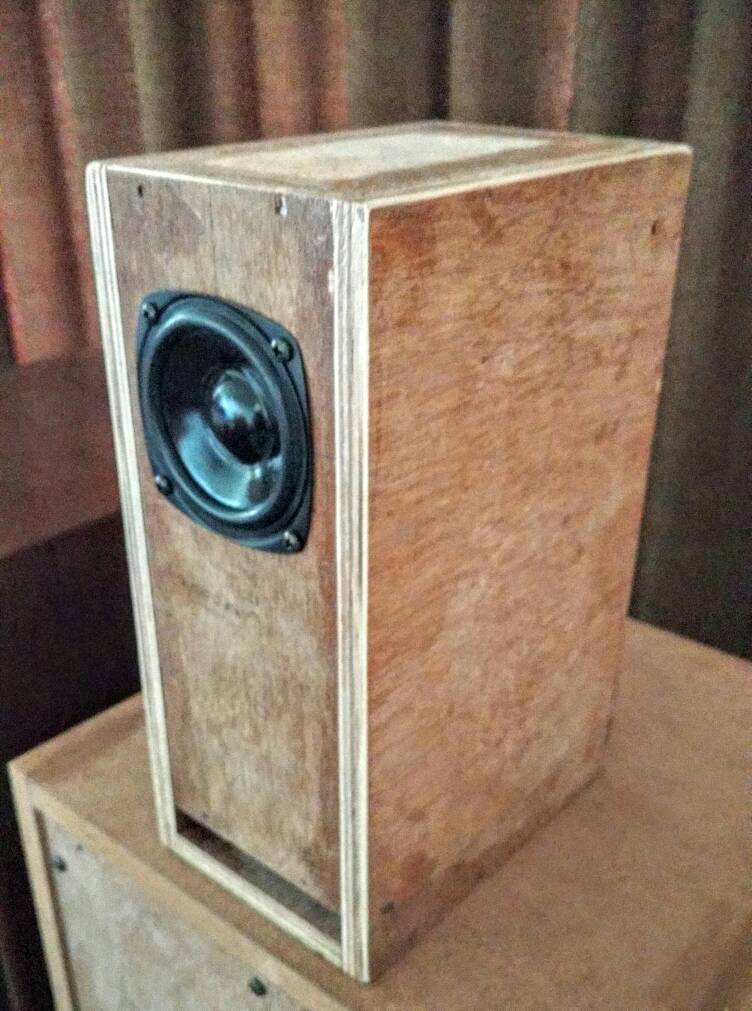
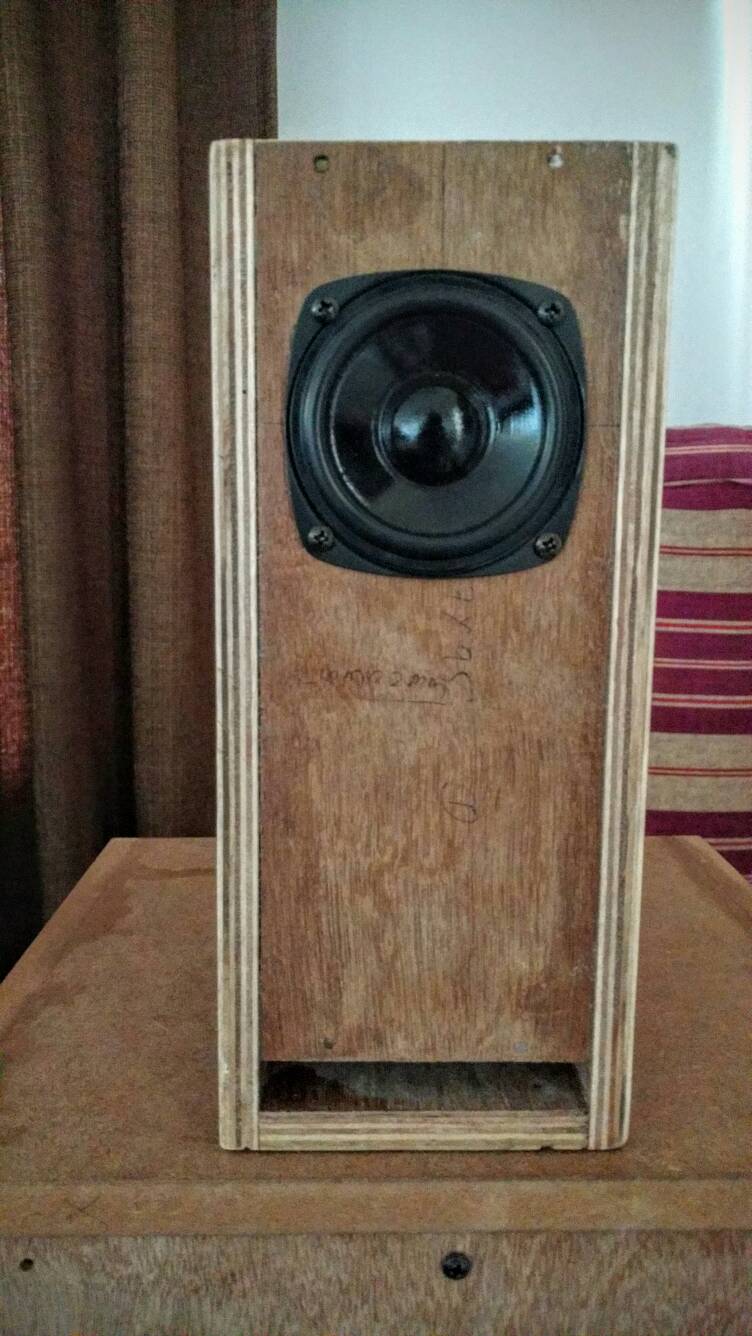
Building a simple mini speaker using a 3" single full range driver for desktop use. The driver is Peerless India S07NI (Peerless Fabrikkerne (I) Ltd - 3" Full Range - S07NE)
Since I don't have any T/S measuring tools, I have used those listed on the link above. Listed below as well:
Fs: 100.87 Hz
Qts: 0.51
Vas: 1.27 Ltr
Sd: 31.17 sq. cm
Freq. Resp.: 100-10000 Hz
Impedance: 4 ohm
SPL: 88.5 dB
Calculated volume of the bass reflex box is 2.8 litres and port tuning is 77 Hz. I have used 15mm ply since I had that lying around. The external box dimensions are 5" (width), 11" (Height), 7" (Depth). Slot port is 0.50" wide and 6" deep. Box is stuffed up to 40% volume using polyfill.
First impression: "Is that really a 3" single driver!?" Ok, that was slightly exaggerated. But, I am pleasantly surprised with the midbass response. Must be going down to 65-70Hz (I think I should invest in acoustic measurement if I am to continue to waste my money in this). Of course, I am testing these with Exposure 3010 which gives me the confidence that it is being tested to its capability (keeping care not to send the cone flying into space). In its final application, it will be powered by a much smaller amplifier. But, somehow I am not getting worried! This little driver is taking almost the same amount of volume (8-10 o'clock position) that I use with the much bigger 100W rated Focals. Power rating of the driver is not listed so I actually don't know its capability.
Second impression: Midrange and vocal are obvisouly the strengths compared to the bass for this speaker and I am not disappointed. Treble is of course rolled off. There is not enough of the highest details available in the treble. But let's keep in mind, it is going to compete with a low-mid budget active multimedia speakers or mid-sized docking/bluetooth speakers. And compared to those, I am already happy with what it is doing. While designing, I suspected that a baffle step compensation may be required as suggested by a previous experience with similar drivers. However, although there may be a bit more vocal/upper midrange energy than ideal, it's actually not bad. It is rather enjoyable. Something often missed in 'safe' souding commercial gear.
NOW, to the advice I need from experts:
I decided to put a 1st order high pass filter on it to avoid pushing the driver beyond its capability and avoiding cone breakup and distortions. So as per calculations, a 440 uF capacitor was ordered to get 6dB roll off down from 90Hz. The thing is, for the first two days, I did not install it. So all the above mentioned observations were without any passive components. The problem is when I finally connected the caps, I got a mixed result with a net negative effect sonically. The relative full bodied-ness of the mid bass gave away to lean/thin character. Now I was not liking the high energy of midrange as much. It is not a big change, but very clearly noticed. On the positive side, maybe, just a very little bit improvement in the clean-ness of sound. A tad less grainy. But on the whole, I prefer the crossover-less sound.
So I can just throw the cap out of the picture, right? Or do I risk breaking the driver in the long run?
Oh! Forgot a few pictures.


Last edited by a moderator:


